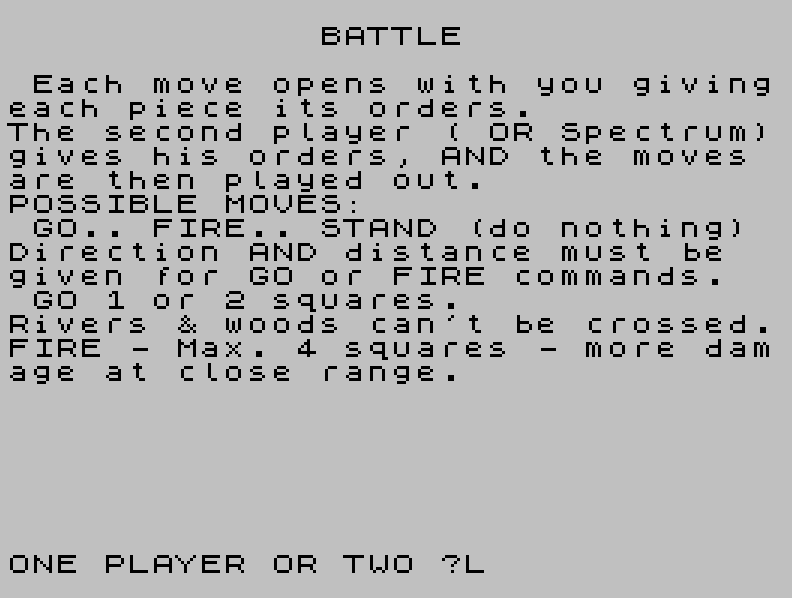
Every time I feel I have a good categorisation system, a new game comes and challenges it. After unabashedly cloning the cRPGAddict’s whole project, but for wargames, I also copied his BRIEF (Bid at Research and Investigation Ended in Failure) format. BRIEFs are short articles that I use to clear games that don’t quite fit the genre but hover annoyingly close. Today’s game fits all my wargame criteria, even if in the shallowest sense: it has several units to control, it has a computer opponent, it has terrain, it has some randomisation. Yet, while it is technically more a wargame than a good chunk of the games I covered, it’s also still so simple that it plays more like a boardgame than a wargame. BRIEF it is – which is perfect given I am on holidays.
Battle features two groups of 4 tanks facing each other in a 16×16 arena:
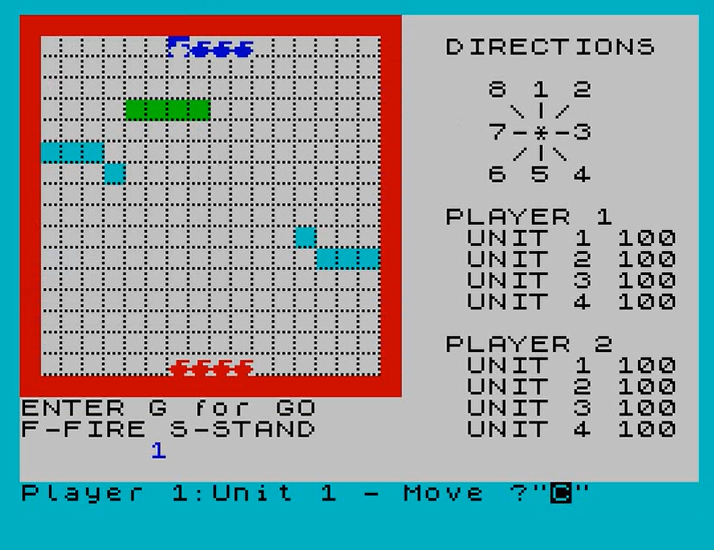
As indicated in the first screenshot, there are only 3 possible actions: move (1-2 squares), fire (range: 4 squares) or stand. The two forces approach each other until they’re within range.
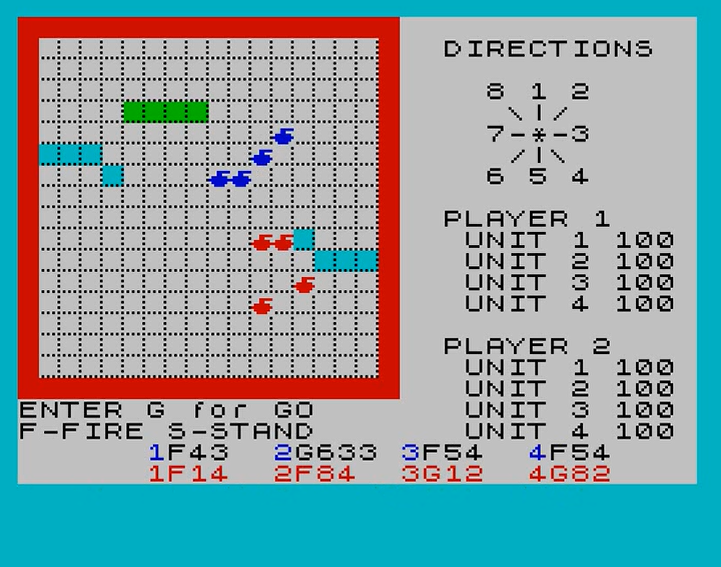
My opponent’s deployment is inefficient: its two front tanks block its two other tanks, who can’t shoot. Meanwhile, I can deploy widely, so each of my tanks can shoot at an enemy, so I can hit the enemy 4 times while it can return fire only twice.
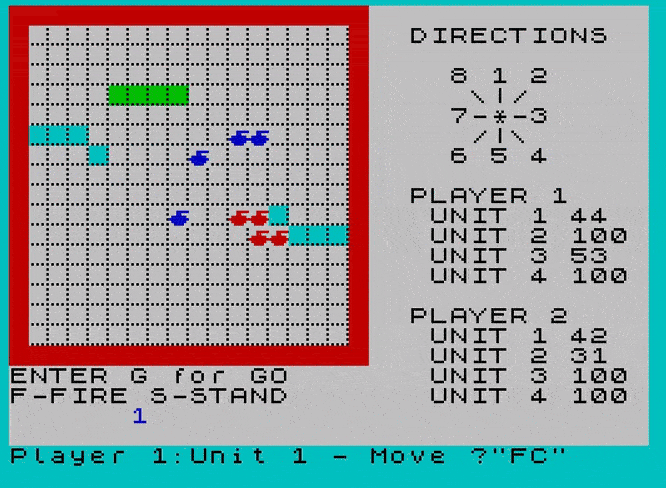
This quickly gives me a decisive advantage, and the 100 HP of my two targets melt rapidly. Soon enough, that’s 4 tanks against 2:
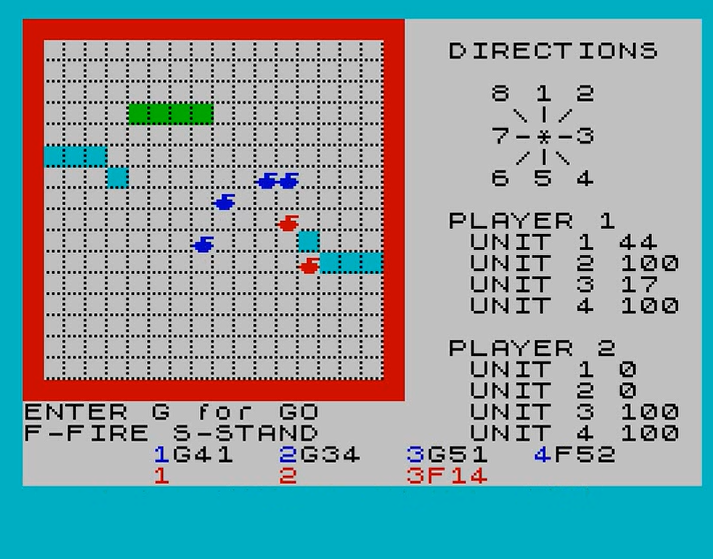
There is no way for the enemy to catch back, and my only regret is losing one tank in the scuffle.
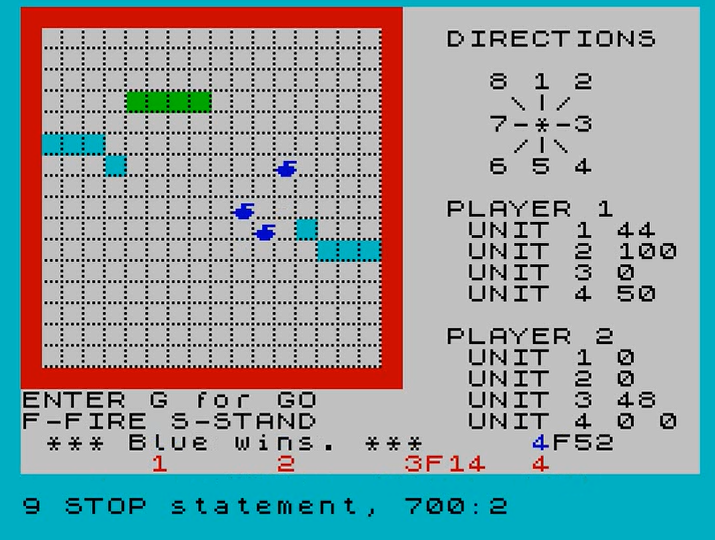
Battle was published as a listing in ZX Spectrum Game Master, a book written by Peter McBride and published by Longman Software. It’s an ambitious book which, in around 160 pages, planned to teach you coding from scratch, using 10 different games as examples, including Battle.
Battle is a simple game, and essentially a list of stubs for would-be developers to expand upon: more impactful terrain, more unit types, different AI behaviour, different movement & firing rules,… As it was written, however, the only difference between a traditional boardgame and Battle is the HP system and the randomisation around it.
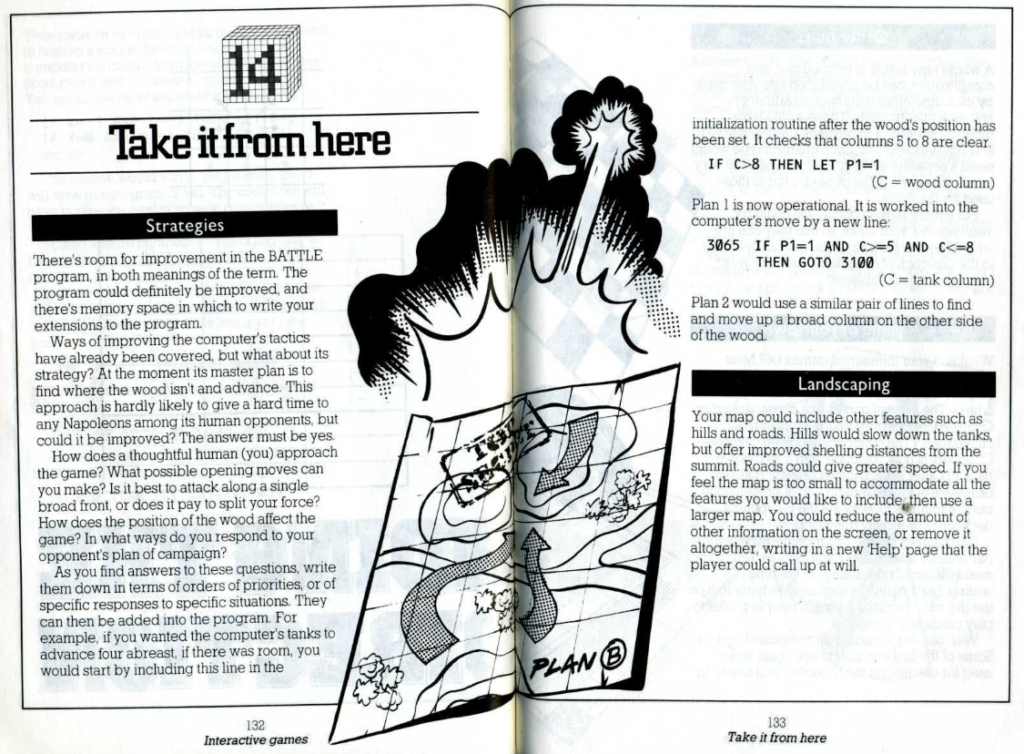
I’ll note that Battle is a bit odd in multiplayer because it’s massively asymmetric: orders are resolved sequentially, so if the first player can “dodge” attacks if the second player aimed at its starting location. This is weirdly balanced by displaying the first player’s movement while the second player writes their order, so in theory the second player knows where to shoot… provided it’s in range.
I am still going to praise the game for its formal quality: commands are displayed on the screen at all times and the game does not crash on incorrect input. This polish does not seem much, but it’s missing in many commercial games. If I had to rate it, it would therefore land above all games that were negatively fun to play, so in the 130s or 140s out of 162 games.